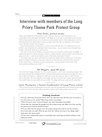What makes the headlines?
Add to My Folder
Use the activities below and the example newspapers on the A3 poster to look at how stories are portrayed in the media
News is now a 24/7 industry. Information about what is happening across the world, is just the press of a button or the click of a mouse away. Television, computers, even mobile phones offer instant access to the latest news, wherever we are. Yet, despite this explosion of modern ‘technonews’, millions of newspapers – our traditional window on world events – are still printed and sold each day. In this current media frenzy, it is sometimes hard to recognise what is balanced news reporting and what is spin, speculation, exaggeration, or simply entertainment.
Providing children with an understanding of how the media works, where news comes from, and the reasons why it is selected and presented in different ways, will help them to develop lifetime strategies for making their own judgements about the media. The children should understand that all issues have more than one point of view and they should be encouraged to question what they read and hear. They should be able to identify the tell-tale signs of bias or distortion, and recognise the significant part that the media plays in our society, and the duty it has to report accurately and responsibly.
This month’s A3 poster deals with a controversial news story, and stresses the importance of reporting different views in a balanced way. Each story is written from a particular point of view, and takes little heed of alternative opinions. Each is written for a particular purpose and audience.
Essential facts
- Where news comes from. World-shattering events, such as earthquakes and famine, make headlines automatically – simply because they have happened. Investigative reporting gives individual newspapers or news channels their exclusives or scoops. However, much of the remaining news comes from people seeking publicity. Everyone from pop groups to football clubs, political parties to the royal family, businesses to voluntary organisations have press offices, churning out press releases to try to obtain coverage for their particular interest.
- What is news? News is whatever readers or viewers find interesting. Disasters are always newsworthy, as are things that will have an impact on our lives, such as new government laws. The need to sell newspapers or capture viewers, means that stories must also fit into the national mindset. What are people most concerned about? Global warming makes the news today, but up until recently, few people cared about it. What are people interested in? The celebrity cult has taken over the media and what every celebrity does is reported on with relish, simply because the public wants to read about them.
- Media language. News is immediate. Time and space are in short supply in both print media and on air. Journalistic language must be concise and direct, offering at-a-glance understanding, whatever the subject. Above all, the words used must capture the reader’s attention. Such directness can suggest exaggeration – it is the ‘shock, horror, drama’ syndrome. ‘Some redundancies may have to be made at the factory’ turns into ‘Local jobs axed’. Interviews often use rhetorical questions to increase a story’s newsworthiness, but they can easily lead to bias, misinformation, exaggeration or distortion.
Already a member? Sign in below.
Published 26 September 2007
Reviews
You need to be signed in to place a review.


